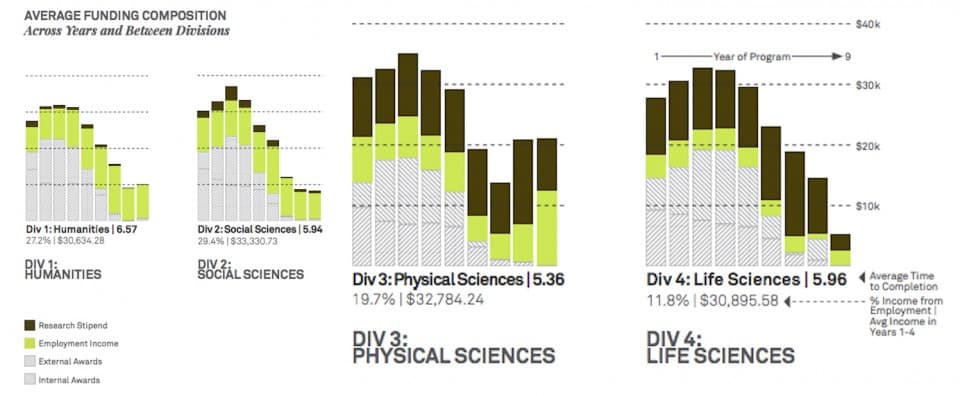Travis Bost, a PhD student at the University of Toronto, has produced a report about the composition of graduate student income at U of T entitled The Quality of Quantity.
The report was released in February and highlights graduate funding as “a quantitative and qualitative problem, as well as an equity problem.” It outlines the incomes of students across years and between the four divisions of PhD student populations: humanities, with 714 students; social sciences with 1,003 PhD students; physical sciences with 1,080 PhD students; and life sciences, with 1,403 PhD students.
The enrolled PhD students complete 24,800 hours of program study with a cumulative 4-8,000 years of paid tuition.
The sources of income for each of the four divisions come from internal and external awards, employment, and stipends. The average income over the last nine years for the humanities is $22,744.69. For those in social sciences, it is $23,433.22. For students in physical sciences, the average income is $23,902.76; for life sciences, it is $26,151.08.
In March 2015, the Canadian Union of Public Employees (CUPE) Local 3902 went on strike for a month after a tentative agreement about funding could not be reached. Last month — on the anniversary of the start of the strike — CUPE 3902 staged a demonstration.
The report states there are inconsistencies in the composition of income and its implications. Many PhD students take longer to complete their degrees than their funding packages cover. The report states that “a handful of Life Science departments taking as much as 3.5 years longer than their Physical Science colleagues” to reach completion.
The report outlines the sources of the funding. While the total incomes are relatively similar, the humanities and social sciences rely disproportionately on employment income, while students in physical and life sciences rely disproportionately on research stipends.
According to the report, Divisions 1 and 2 rely roughly twice as much on employment than Divisions 3 and 4. “The severity of this trend is equally intense, with one D2 department drawing nearly 50% of their income [from] employment and two in D4 less than 2%,” the report claims.
It also states that employment for Divisions I and II increases over the course of the program, but “progressively decreases” for Divisions 3 and 4.
“This contradiction is often obscured by lumping all divisions together.” Bost writes that the “explanation for the contradiction likely is that employment for Divisions 3-4 advances their own work while that of Divisions 1-2 takes away from theirs.”
“There are many unanswered questions due to the limitation of centralized data compiled by the University,” the report alleges.
Bost was not paid to produce the report, nor does he have any affiliations with campus groups.


